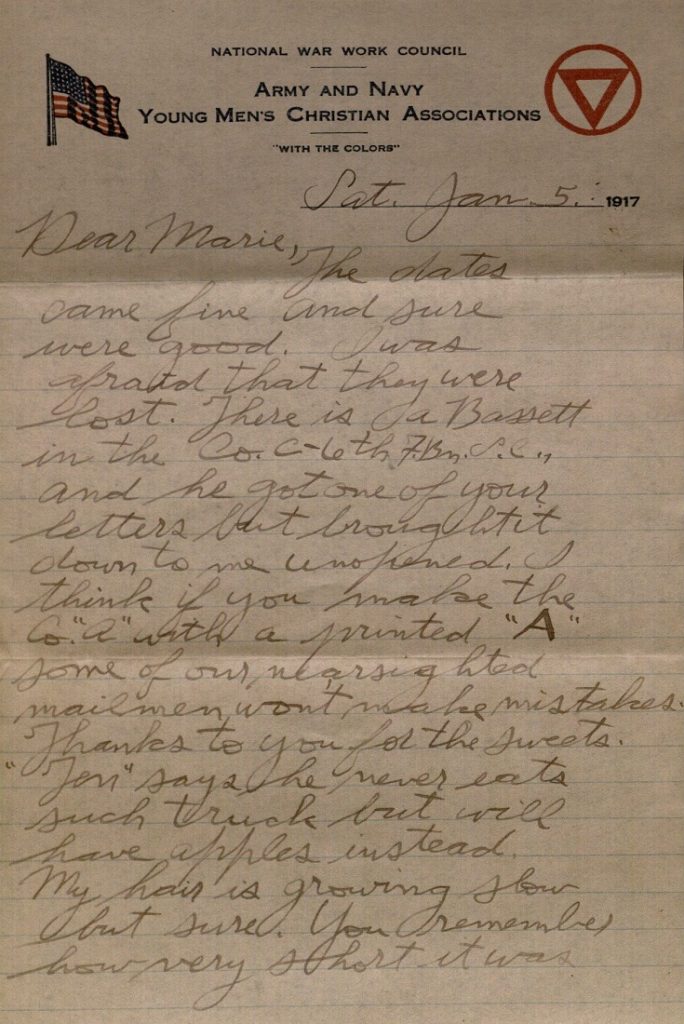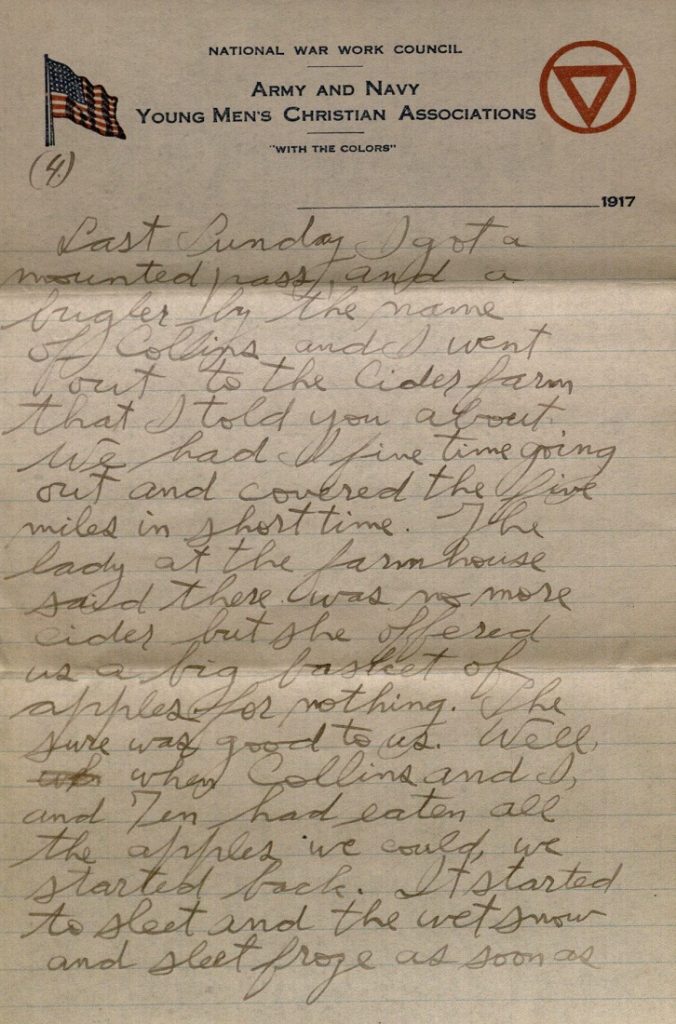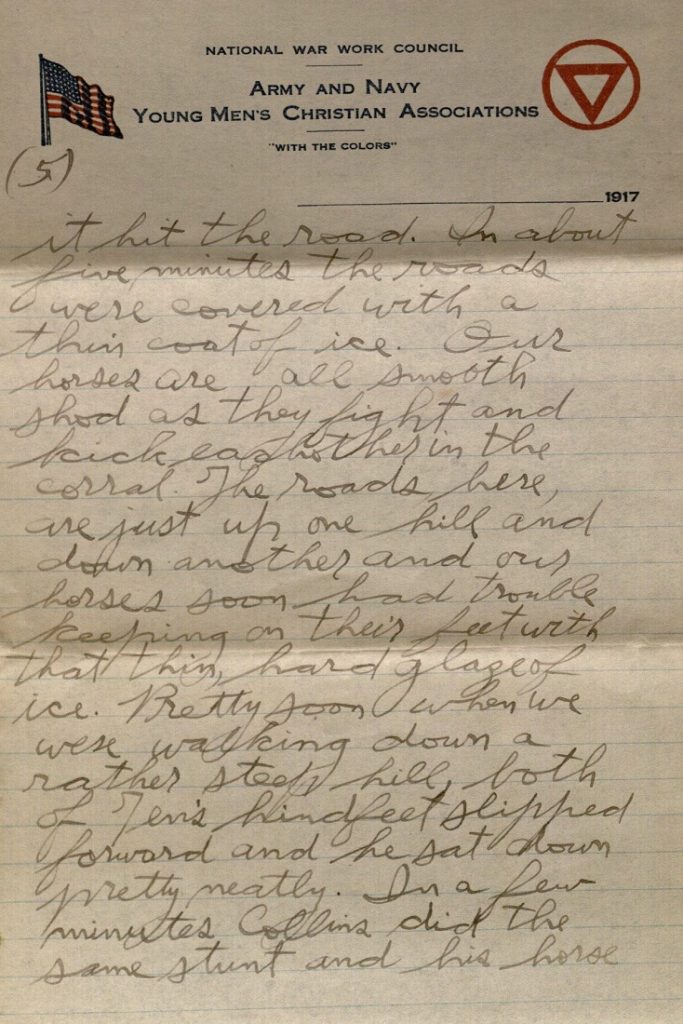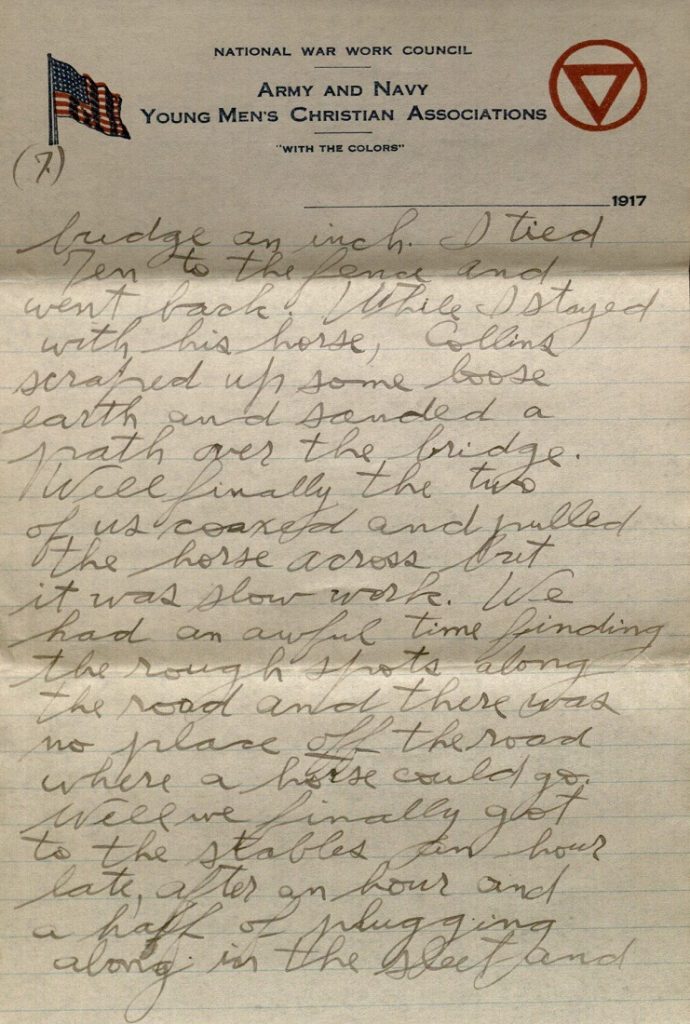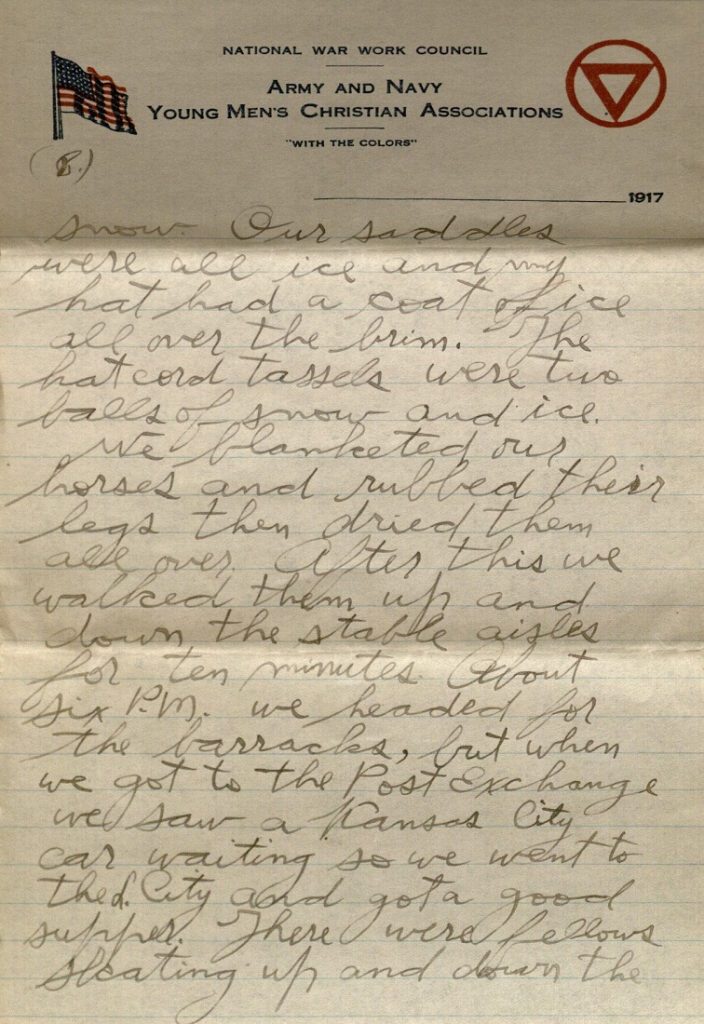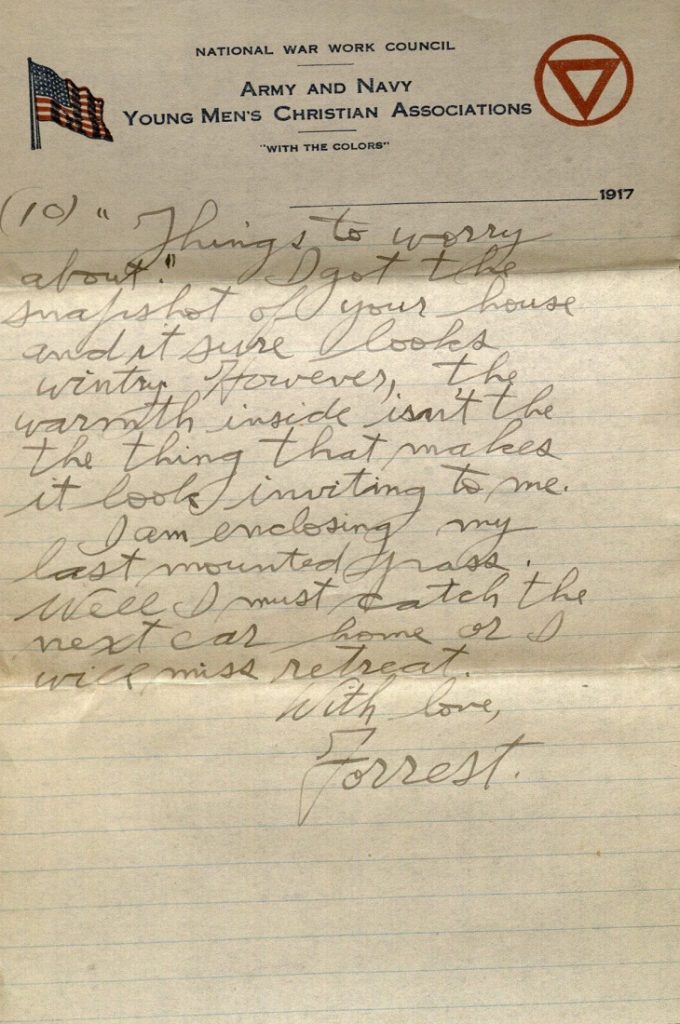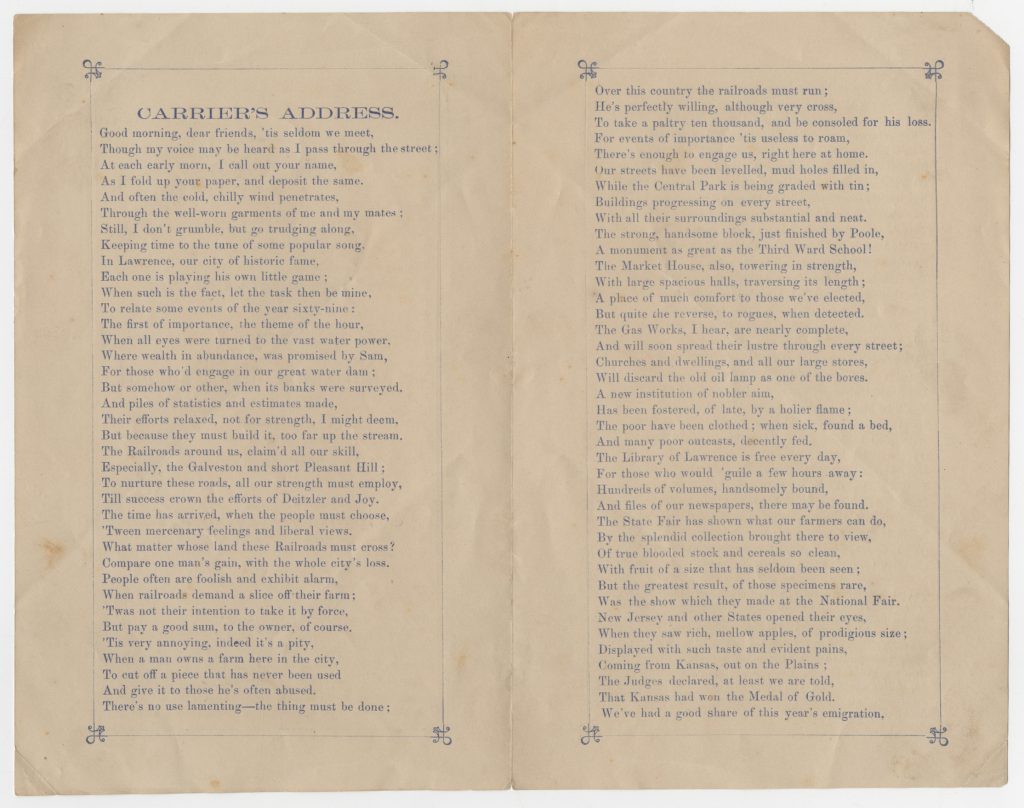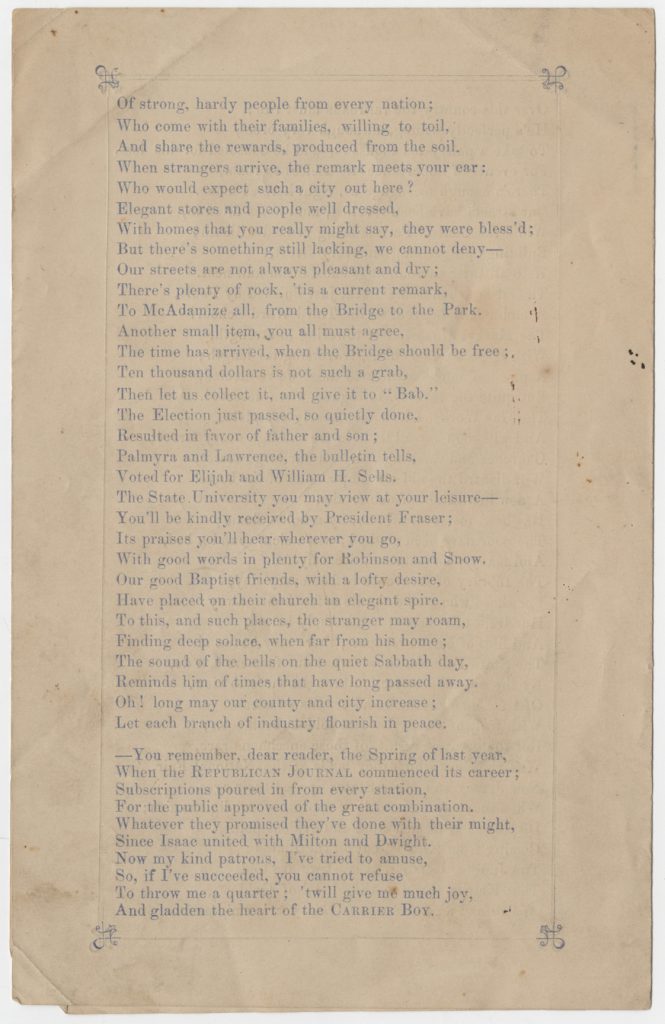World War I Letters of Forrest W. Bassett: January 1-7, 1918
January 2nd, 2018In honor of the centennial of World War I, we’re going to follow the experiences of one American soldier: nineteen-year-old Forrest W. Bassett, whose letters are held in Spencer’s Kansas Collection. Each Monday we’ll post a new entry, which will feature selected letters from Forrest to thirteen-year-old Ava Marie Shaw from that following week, one hundred years after he wrote them.
Forrest W. Bassett was born in Beloit, Wisconsin, on December 21, 1897 to Daniel F. and Ida V. Bassett. On July 20, 1917 he was sworn into military service at Jefferson Barracks near St. Louis, Missouri. Soon after, he was transferred to Fort Leavenworth, Kansas, for training as a radio operator in Company A of the U. S. Signal Corps’ 6th Field Battalion.
Ava Marie Shaw was born in Chicago, Illinois, on October 12, 1903 to Robert and Esther Shaw. Both of Marie’s parents – and her three older siblings – were born in Wisconsin. By 1910 the family was living in Woodstock, Illinois, northwest of Chicago. By 1917 they were in Beloit.
Frequently mentioned in the letters are Forrest’s older half-sister Blanche Treadway (born 1883), who had married Arthur Poquette in 1904, and Marie’s older sister Ethel (born 1896).
In this week’s letter, Forrest discusses his time serving guard duty. He also recounts a day trip to a “cider farm” with a fellow soldier; the two – with their horses – got stuck in a snow and ice storm on the way back to the fort (“It started to sleet and the wet snow and sleet froze as soon as it hit the road. In about five minutes the roads were covered with a thin coat of ice”).
Click images to enlarge.
Sat. Jan 5. 1917
Dear Marie,
The dates came fine and sure were good. I was afraid that they were lost. There is a Bassett in the Co. C-6th F. Bn. S.C., and he got one of your letters but brought it down to me unopened. I think if you make the Co. “A” with a printed “A” some of our nearsighted mailmen won’t make mistakes. Thanks to you for the sweets. “Ten” [Forrest’s horse] says he never eats such truck but will have apples instead. My hair is growing slow but sure. You remember how very short it was when I came home?
Our Company went on guard Thursday. I was put on Post No. 1, which is the guard house at the Cantonment. It boasts of three prisoners. I had the hours between 4:45-6:45 and 10:45-12:45, day & night. During the day I had the front of the guard house only and at night, two storehouses extra. It was pretty cold but not as bad as some nights. I got pretty handy at “pulling the gun,” as everyone has to be challenged with the pistol raised. Of course no one is challenged except at night but Post #1 is as busy one as the officers of the guard are coming in from inspection tours about every 15 minutes.
I think we will go South this month. The Major of the B’n. told us in a speech that we were going South unless a counter-order was issued. This would suit me fine only it would take our letters longer to reach eachother. Also there is a big chance of the Co. “A” being motorized. The 1st Sgt. was looking for men in the Co. who could use motorcycles. I like the horses though and am on “Ten” a great deal.
Last Sunday I got a mounted pass, and a bugler by the name of Collins and I went out to the Cider farm that I told you about. We had I fine time going out and covered the five miles in short time. The lady at the farmhouse said there was no more cider but she offered us a big basket of apples for nothing. She sure was good to us. Well, when Collins and I, and Ten had eaten all the apples we could, we started back. It started to sleet and the wet snow and sleet froze as soon as it hit the road. In about five minutes the roads were covered with a thin coat of ice. Our horses are all smooth shod as they fight and kick eachother in the corral. The roads here, are just up one hill and down another and our horses soon had trouble keeping on their feet with that thin, hard glaze of ice. Pretty soon when we were walking down a rather steep hill, both of Ten’s hindfeet slipped forward and he sat down pretty neatly. In a few minutes Collins did the same stunt and his horse fell twice while regaining his feet. We rode a few minutes longer then it got so bad we had to dismount and lead our horses. You would think that we could have ridden along the edge of the road where it wasn’t hard, but no chance. We came to a plank bridge across a creek and believe me it sure was slippery. Every plank was glazed over with a coat of ice. I got Ten across alright but when Collin’s tried to lead “Buck” across he fell and wouldn’t budge an inch. I tied Ten to the fence and went back. While I stayed with his horse, Collins scraped up some loose earth and sanded a path over the bridge. Well finally the two of us coaxed and pulled the horse across but it was slow work. We had an awful time finding the rough spots along the road and there was no place off the road where a horse could go. Well we finally got to the stables an hour late, after an hour and a half of plugging along in the sleet and snow. Our saddles were all ice and my hat had a coat of ice all over the brim. The hat cord tassels were two balls of snow and ice. We blanketed our horses and rubbed their legs then dried them all over. After this we walked them up and down the stable aisles for ten minutes. About six P.M. we headed for the barracks, but when we got to the Post Exchange we saw a Kansas City car waiting so we went to the L. City and got a good supper. There were fellows skating up and down the paved streets of Leavenworth, so you can see how it was. We telephoned to the first sergeant when at the stables and nothing more was said to us when we got back. The Co. has only been riding once this week as even the narrow paths in the woods are so slippery that a horse can’t stand up.
Well is getting close to retreat so I guess I’ll have to close. Lauretta tells me you are N.G. when it comes to answering her letters. “Things to worry about.” I got the snapshot of your house and it sure looks wintry. However, the warmth inside isn’t the thing that makes it look inviting to me.
I am enclosing my last mounted pass. Well I must catch the next car home or I will miss retreat.
With love,
Forrest.
Meredith Huff
Public Services
Emma Piazza
Public Services Student Assistant

